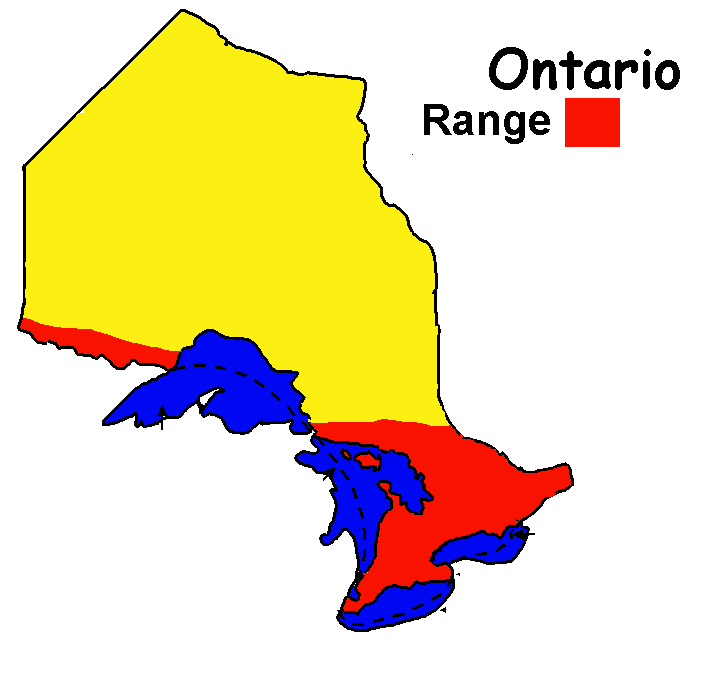Salamanders
Mudpuppy
 Necturus maculosus
Necturus maculosus - At 25-30 cm, this is Ontario's largest salamander.
- The mudpuppy has a reddish-brown back, with black spots scattered over the body. Juveniles have brightly colored yellow stripes on their body that fade with age.
- This salamander retains its external gills throughout its life. These red gills are feathery and are most obvious when fully opened.
- This salamander is very slippery and is almost impossible to hold with bare hands.
- The mudpuppy is always found in water and frequents the bottom of riverside marshes, weedy ponds, and lakes.

- Because oxygen is absorbed from the water through external gills, the mudpuppy is restricted to permanent bodies of water. The lungs are poorly supplied with blood and have a minor role in respiration. They are used mostly for gulping air at the surface of warm, muddy water that is low in oxygen.
- The mudpuppy hides in weeds or under rocks during the day and emerges at night to feed on crayfish, tadpoles, worms, fish, and aquatic insects.
- Breeding occurs in the fall, but the eggs are not laid until April or May of the following year.












